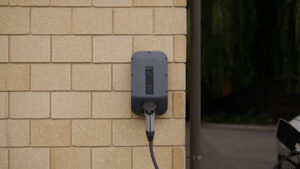As I look into the Australian automotive landscape for 2025, it’s clear that a lot is changing. From what people are buying to how cars are powered, the whole market is shifting. I’ve been following these trends closely, and it seems like the days of small passenger cars dominating are fading, while SUVs and utes are really taking over. Plus, there’s a big shake-up happening with new brands, especially from China, making waves with both electric and petrol cars. It’s an interesting time to be watching the automotive industry insights in Australia.
Overview of Australia’s New Vehicle Market in 2025
I see 2025 as a reset for new-car buyers in Australia. Supply has mostly caught up, dealer stock is back on the ground, and discounting has crept in after the wild years of waitlists and markups. I lean on VFACTS data to track the pulse, and the pattern is clear: brands are chasing share with sharper pricing, richer spec packs, and quicker delivery.
| Segment | 2025 trajectory | What is moving the needle |
| Medium/Large SUVs | Up | Family needs, towing, hybrid options |
| Utes (4×4 and 4×2) | Steady to Up | Trade demand, lifestyle buyers, new-gen tech |
| Small passenger cars | Down | Buyers are upsizing, with fewer new releases |
| Battery-electric (BEV) | Up | More models under key price points, better range |
| Hybrids & Plug-in hybrids | Up | Fuel savings, fleet targets, model availability |
| Luxury | Up | Tech features, comfort, and salary packaging interest |
- New Vehicle Efficiency Standard begins shaping model mix and price strategies, nudging fleets and private buyers towards lower-emission options.
- Price pressure from fast-growing Chinese brands is forcing sharper deals on both EV and ICE models.
- Finance costs remain a talking point; more brands are using low-rate offers and bonuses to move metal.
- Supply has normalised for many nameplates, so delivery times are shorter and trim choices are wider.
- Fleet renewal is active (rental, corporate, government), with stricter emissions targets and total cost-of-ownership math favouring hybrids and some BEVs.
- Used-car prices are cooling, which changes trade-in values and puts heat on new-car transaction prices.
In practical terms, 2025 is the year where buyers finally get choice back—and the room to negotiate again.
Regional flavour still matters. City buyers in NSW and Victoria lean into electrified models, helped by denser charging and salary packaging, while Queensland and Western Australia continue to back utes and towing-friendly SUVs. Sales channels are shifting too: agency and direct models are growing, yet traditional dealers remain central for test drives, finance, and after-sales support. In short, 2025 looks like the year the market swaps scarcity for choice and sharper value.
SUVs, Utes & the Decline of Small Passenger Cars
I have watched the market tilt even further toward taller, tougher vehicles. Dual‑cab utes and mid‑size SUVs sit at the front of the sales queue, month after month, while traditional small hatches and sedans keep slipping. Small passenger cars keep shrinking as a share of sales, even when fuel costs bite.
| Segment | Jan 2025 share | Apr 2025 share | Jun 2025 share |
| Passenger cars | 14.7% | 13.9% | 12.4% |
| SUVs | 60.8% | 59.8% | 58.3% |
| Utes/Light commercials | 21.3% | 22.6% | 25.3% |
What is pushing this shift
- Space and flexibility: prams, pets, sports gear, and camping kits all fit more easily, and seat heights save backs on the school run.
- Towing and payload: caravans, boats, and trailers are common. Utes give the right tow ratings and tray utility in one vehicle.
- Road reality: from kerbs and speed humps in the suburbs to gravel and ruts outside town, extra clearance feels safer and less stressful.
- Model range: many small-car nameplates have been retired or moved up in price. Buyers now see entry-level SUVs sitting where small hatches used to be.
- Features and tech: the latest safety suites, big screens, and driver aids are widely bundled into SUVs; small cars often end up dearer once optioned.
- Finance and resale: utes and mid‑size SUVs tend to hold value well, which helps with loans, fleet cycles, and novated leases.
- Supply choices: global factories keep sending us more SUVs and pickups because that is where demand sits, so showroom stock reinforces the trend.
Small passenger cars are not gone, but they are boxed in. The few that thrive either lean on keen pricing, hybrid fuel use, or fleet loyalty. Even then, buyers who once drove a light hatch now test‑drive a small SUV because the size difference on the road feels minor, yet the cabin and boot are more forgiving.
Looking ahead, I expect hybrid SUVs and more efficient utes to keep the upper hand. If petrol prices spike hard or city parking tightens further, some momentum could swing back to compact hatchbacks and city‑friendly hybrids—but they will be fighting a reduced lineup and well‑entrenched habits.
I will admit, after one wet weekend loading bikes and a muddy pram, I understood why so many households swap a little hatch for a wagon‑ish SUV or a dual‑cab—less Tetris, less swearing, and everyone gets home on time.
Rise of Chinese Brands: EV & ICE Market Disruptors
I have watched Chinese marques move from “nice idea, maybe later” to front-of-mind for a lot of buyers, and it has happened fast. It is not just EVs; budget-friendly SUVs and utes at sharp prices are pulling in private buyers and fleets alike. They are not just cheaper; they are reshaping what “value” means in a new car.
| Brand (China) | Share of new sales (YTD 2025) | YoY unit growth |
| BYD | 4.0% | +145.9% |
| GWM (Haval/GWM Ute) | 4.2% | +22.9% |
| MG | 3.5% | -11.3% |
| Chery | 2.5% | +229.8% |
Note: Indicative industry sales data, Jan–Aug 2025.
Why this surge makes sense to me:
- Strong spec at a price point rivals struggle to match (ADAS, big screens, heat pumps on EVs, the lot).
- Rapid model refresh cycles and quick right‑hand‑drive launches keep line-ups looking current.
- Battery tech that cuts cost (LFP packs), with simple trims that fleets can order at scale.
- Long warranties and fixed‑price servicing that undercut anxiety about new brands.
- Distribution that keeps margins tight: online ordering, lean dealer footprints, and third‑party service tie-ups.
The old rule that “you can’t get a well-equipped EV under forty grand” no longer holds; in practice, many buyers now start their shortlists with a BYD or MG and only then check the usual suspects.
On the EV side, BYD and MG have cracked the mainstream with small-to-mid models that hit real budgets, not just brochure dreams. Range is “good enough” for daily use, and while peak charging speeds can lag premium rivals, the total package—purchase price, warranty, and in‑car tech—wins the weekend‑to‑weekday argument. Fleet managers I speak with are also leaning in; meeting efficiency standards at lower capex is hard to ignore.
ICE still matters. GWM’s utes and mid-size SUVs are picking up trades and families who want space without a scary repayment. Safety ratings have improved, and cabin tech feels modern. Chery’s pace is a surprise: quick showroom rollouts, sharp finance, and aggressive marketing are converting test drives into sales.
Service and support used to be the sticking point. I now see denser parts supply, more authorised repair centres, and clearer roadside cover. Some brands still rely on partner networks rather than legacy dealers, but appointment lead times are shortening and loan cars are more common.
This shift is forcing a response. Japanese and Korean brands are trimming prices, adding hybrids as standard in key grades, and bundling more safety kits. Europeans are defending on quality and ride feel, and cutting sharper fleet deals. I expect price pressure to continue into 2026, with margins tight and promotions near year‑end plate changes.
Near term, I am looking for three things: sub‑$35k drive-away EVs to land as permanent (not promo) pricing, more RHD allocation on fresh platforms, and steady improvements in charging maps tied to brand apps. If those arrive, the share held by Chinese brands in both EV and ICE should edge higher again.
Electric, Hybrid & Plug-in Vehicle Trends

I see three distinct tracks in Australia right now: hybrids anchoring the volume, plug-in hybrids breaking out of the niche, and battery electrics gaining ground as prices ease and charging improves. The mix isn’t static; it’s moving month to month as stock arrives, incentives shift, and people test what works for their daily drives.
| Metric | Australia snapshot |
| BEV share (Jan–Apr 2024) | About 7.2% of new sales |
| Electrified total (HEV+PHEV+BEV, Jan–Apr 2024) | Roughly 16.2% |
| PHEV growth (YTD 2025) | Up around 183% year on year |
| PHEV nameplates (2025) | Well over 50 on sale |
- Hybrids: the default for many households. They’re simple, efficient in traffic, and don’t need a plug. Supply constraints are easing, so I expect steadier pricing and shorter waits.
- Plug-in hybrids: popular with regional and apartment dwellers who can’t always charge at home. The ability to do the school run on electrons and hit the highway without planning stops is winning people over.
- Battery electrics: prices are sliding, mainly due to competition from newer entrants and sharper deals. Charging networks are denser on the East Coast, and 11 kW home charging is becoming common in houses with three‑phase power.
My read is straightforward: most first‑time adopters start with a hybrid or PHEV, then move to a BEV once their charging situation is sorted.
Financing is also reshaping demand. Salary packaging and the FBT break on eligible zero‑emission cars have made novated leases a launchpad for BEVs. Based on current EV finance trends, novated arrangements account for the bulk of EV funding, with BEVs taking a rising share of new salary‑packaged orders.
PHEVs are the surprise mover in 2025, surging as more models land and buyers hedge against sparse charging in some regions.
What I’m watching next:
- Price gaps between HEVs, PHEVs, and BEVs as shipping costs and tariffs shift.
- Real‑world range and battery longevity claims versus Australia’s heat and highway speeds.
- Charger uptime and bankable coverage on intercity routes; reliability matters more than headline port counts.
- Fleet renewal cycles, especially government and corporate, as they ripple into the 3–5 year used market.
In short, hybrids keep the volume steady, PHEVs are having a moment, and BEVs are marching forward as costs fall and charging becomes less of a hassle.
Regulatory Landscape & State-Level EV Incentives
I see 2025 as the year Australia’s policy settings start to really steer the showroom. The New Vehicle Efficiency Standard, kicking off in 2025, is the headline policy shaping supply. It sets fleet-average CO2 targets for new light vehicles and pushes brands to bring cleaner models or manage credits and penalties. It’s not flashy, but it nudges what gets imported and how cars are priced.
At the federal level, a few levers already tilt toward EVs:
- Customs duty on eligible EVs has been removed, which trims import costs versus many petrol models.
- EVs benefit from a higher Luxury Car Tax threshold compared with internal combustion cars, helping with on-drive-away pricing for pricier models.
- GST still applies at 10% for all vehicles.
- Many employer-provided EVs qualify for an FBT exemption when under the LCT threshold, which is why novated leases have taken off.
Financial conditions also matter. Shifts in rates, refinancing, and buyer budgets flow through to EV uptake, especially for salary packaging and fleet turnover; recent investor lending trends hint at how money moves can squeeze or support household car decisions.
Here’s how state and territory settings look right now (stamp duty and rebates are the main moving parts). Always check the latest fine print before signing:
| Jurisdiction | 2025 snapshot |
| ACT | Stamp duty is waived on new zero‑emission vehicles (ZEVs) when bought new and emissions-free. |
| NSW | EV-specific stamp duty exemption and the purchase rebate ended on 1 Jan 2024; EVs are now treated like other vehicles for duty. |
| NT | Free registration plus up to about $1,500 off stamp duty (effectively the first ~$50,000 duty-free) until 30 Jun 2027. |
| QLD | Lower EV stamp duty bands: typically ~2% under $100k and ~4% over $100k, below rates for other vehicles. |
| SA | No special EV stamp duty treatment in 2025. |
| TAS | EV stamp duty concession ended on 1 Jan 2024. |
| VIC | EVs avoid the steep “luxury” stamp duty scale; a flat rate (around 4.2%) applies to higher-value EVs instead. |
| WA | Rebate up to ~$3,500 for EVs with dutiable value under ~$70,000, due to run until 10 May 2025 or until funds run out. |
What this means in practice:
- Fleet buyers will feel the NVES first; more efficient utes, vans, and SUVs should filter in as import mixes shift.
- Private buyers may see sharper deals on compliant models if brands chase credits, while high-emitting grades face tighter supply or firmer pricing.
- Salary packaging stays attractive for eligible EVs due to the FBT exemption, especially for commuters clocking consistent kilometres.
- State benefits now vary widely; a move across borders can change total on-road costs by thousands.
- Second-hand EV values could stabilise as policy settings become clearer and charging access improves.
I keep a simple rule of thumb: line up the federal tax settings, then layer in your state’s duty/rego position—only then compare the monthly cost, not the sticker price.
Policies do change, sometimes quietly and mid-year, so I always double-check state revenue pages and dealer delivery dates before assuming an incentive applies.
Market Forecast & Competitive Dynamics

Year-to-date figures point to a mixed 2025: total sales are slightly lower than last year, SUVs are still climbing, and traditional passenger cars keep shrinking. SUVs are up in the low single digits so far this year, while passenger cars are down sharply. I expect the full year to finish roughly flat to a small uptick, helped by steadier supply and sharper pricing.
The battleground for share over the next 24 months will be mid-size SUVs and sub-$50k EVs.
Forecast at a glance (my ranges reflect base-case assumptions):
| Metric | 2025 (guidance) | 2026 (outlook) | 2027 (outlook) |
| Total new-vehicle growth (y/y) | -1% to +2% | +2% to +4% | +3% to +5% |
| SUV share of sales | ~60% | 61%–63% | 62%–64% |
| Ute/pick-up share | 18%–20% | 18%–20% | 17%–19% |
| Passenger car share | 12%–14% | 11%–13% | 10%–12% |
Powertrain mix (share of sales):
| Powertrain | 2025 | 2026 | 2027 |
| Battery EV | 10%–13% | 14%–18% | 18%–22% |
| Hybrid (non-plug-in) | 13%–17% | 14%–18% | 15%–20% |
| Plug-in Hybrid | 2%–4% | 3%–5% | 4%–6% |
Competitive dynamics I am watching:
- Price pressure from newer Chinese entrants. BYD has more than doubled sales year to date, GWM is up solidly, and Chery has surged off a small base. This is squeezing margins in small and mid-size SUVs, and pulling some buyers out of entry-level passenger cars.
- Incumbent response. Toyota remains near one-fifth of the market and leans on hybrids. Hyundai–Kia and Ford are refreshing key SUVs and utes, bundling finance and service packs to hold share. Mazda is defending with spec bumps rather than pure discounting.
- Model cadence and supply. Wait times are improving as shipping and parts normalise. That tends to bring back drive-away deals and boost private sales late in the year.
- Emissions rules and fleets. Tighter efficiency targets push brands to prioritise hybrids and EVs. Fleet and government orders are the first to move, which lifts the headline EV share even if private demand is uneven.
- Financing costs. If rates settle or ease into 2026, I see a release of deferred purchases, especially in family SUVs and tradie utes.
- Channel shifts. More agency-style retail in premium segments steadies pricing but can cap heavy discounting. Independent dealers stay aggressive on volume models.
Brand momentum snapshot (Jan–Aug 2025 vs 2024):
- Toyota: steady leadership with minor slippage, still the benchmark on volume.
- BYD: fastest riser, expanding beyond one or two hero models.
- GWM and Chery: rapid growth in budget SUVs; awareness is catching up.
- MG: mixed year after a strong run; competition biting at the same price points.
- Mazda and Mitsubishi: softer on older model cycles; reliant on updates to stabilise share.
If rates ease and efficiency rules bite harder, I expect a faster shift to hybrids and BEVs from 2026, with fleets pulling the market forward and private buyers following as prices and running costs line up.
I will revisit these ranges as more monthly data lands, but the direction feels clear: more SUVs, rising electrification, and a tougher price game in the middle of the market.
Consumer Behaviour & Manufacturer Strategy
I see Australian buyers in 2025 taking a breath after the long waitlists. Budgets are tight, but people are still shopping—just with more homework. They compare SUVs with utes, then throw a hybrid hatch into the mix as a plan B. Convenience matters, yet running costs and resale are front of mind.
After record new-vehicle sales in 2023, the mood has swung from scarcity to value checks. Discounts are back in place, and test drives are full again. Stock isn’t even across brands, though; some variants are abundant, others still trickle in.
What I see buyers prioritising now:
- Transparent pricing with fewer surprise fees and clearer drive-away totals
- Lower total cost of ownership: fuel, insurance, tyres, servicing, and resale
- Safety and tech that just works: AEB, good cameras, lane support, wireless phone mirroring
- Space and usability: child seats, prams, tow ratings, roof loads, and easy parking
- Delivery certainty and honest ETAs, not vague promises
- Finance that feels predictable: fair trade-ins, guaranteed future value options, and simple repayments
In my view, if the price is clear and the wait is short, the decision happens quickly.
Sales-channel shifts are shaping expectations as much as the cars themselves:
| Model | Who owns stock | Price setting | Dealer role | What buyers notice |
| Franchise dealership | Dealer | Negotiated, incentives vary | Sell, finance, trade-ins, demo drives, service | Room to haggle, but results vary by store |
| Agency / D2C | Manufacturer | Fixed national drive-away | Test drives, handover, service | Same price everywhere, fewer discounts, smoother online steps |
| Hybrid setups | Mixed | Fixed for some, negotiated for others | Mixed | Inconsistent feel model-to-model |
How brands are responding, practically:
- Slimmer trim lines with bundled options to cut build complexity and reduce wait times.
- Quiet mid-year spec updates (extra airbags, better infotainment) instead of headline price cuts.
- Finance as a feature: rate specials, balloon/guaranteed future value deals, and sharper leasing for small businesses.
- National inventory pooling and fast inter-state swaps to get cars in driveways sooner.
- More hybrid variants in core models, and EV entry points with standard home-charging support.
- Fleet pushes into government, rideshare, and tradie setups, with tailored service hours and uptime guarantees.
Chinese challengers keep the pressure on with long warranties and feature-rich trims. Japanese and Korean brands are answering with stronger ownership packages, capped service, and better base specs. I see buyers rewarding clear, fixed pricing and quick delivery over brand loyalty. If that holds, expect sharper fights in small and mid SUVs, plus dual-cab utes with hybrid tech creeping in. The brands that deliver certainty—and back it with flexible servicing—will keep winning repeat sales.
Broader Implications: Safety, Infrastructure & Environmental Impact

I keep coming back to the simple question: are the cars we’re buying making our streets and environment better or worse? It’s not a neat answer. Big vehicles feel safe from the driver’s seat, EVs cut exhaust fumes, and tech helps avoid crashes. But trade-offs are sitting in plain sight.
- Safety on and around the road
- Infrastructure stress points
- Environmental knock-ons
I find the best results come when we match cleaner vehicles with calmer streets: slower speeds where people walk and ride, right-sized cars for city trips, and smart charging that respects the grid.
- What I’d prioritise next
- Safer streets now: lower speeds on busy pedestrian corridors, safe crossings, and intersection AEB performance as a buying factor.
- Practical charging: uptime targets, simple payments, apartment retrofit guides, and clear wiring standards for strata.
- Right-sizing signals: parking rules and fleet procurement that reward smaller, lighter vehicles without punishing trades and regional needs.
- Honest cost of roads: a fair, simple distance-based charge over time as fuel excise fades, with protections for low-income and remote drivers.
- Circular plans: repairability scores, battery warranty transparency, and local recycling trials tied to import approvals.
Bigger, heavier vehicles may feel safer for drivers, but without better street design and smarter policy, we shift risk and costs onto everyone else.
Safer systems and better-built infrastructure shape daily life, from how we travel to the air we breathe. These choices also affect wildlife and energy use. Want more insights? Visit our website for simple guides and real examples, or get in touch with our team.
Frequently Asked Questions
What types of vehicles are Aussies buying the most these days?
From what I’ve seen, Aussies are really into SUVs and Utes. These vehicles are popular because they’re handy for lots of different things, whether it’s a weekend adventure or just getting around town. Small passenger cars, on the other hand, aren’t as popular as they used to be.
Are electric cars becoming more common in Australia?
Yes, definitely. There’s a growing interest in electric vehicles (EVs), and more affordable, good-quality EVs are becoming available. This is partly because people are more aware of the environment, and the government is offering incentives, which is making the switch easier for buyers.
What’s the deal with Chinese car brands in Australia?
Chinese car brands are making a big splash in the Australian market. They’re bringing a good range of both electric and regular petrol cars that are catching people’s attention. Their arrival is shaking things up and giving consumers more choices.
How are hybrid and plug-in hybrid cars doing in Australia?
Hybrid and plug-in hybrid cars are also gaining traction. They offer a middle ground for people who want better fuel efficiency and lower emissions but aren’t quite ready to go fully electric. The variety of these types of cars is growing, which is good news for consumers.
Are there any government programs helping people buy electric cars?
Yes, several states and territories have programs in place to encourage people to buy electric cars. These can include things like rebates, discounts on registration, or grants to help with the cost. It’s worth checking what’s available in your specific area.
What are the main things influencing car sales in Australia right now?
A few things are shaping the market. Consumer tastes are shifting towards SUVs and EVs, and new brands, especially from China, are offering competitive options. Plus, economic factors and government policies around emissions are playing a big role in what people are choosing to buy.











